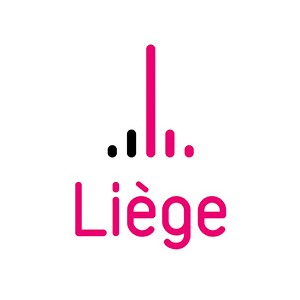Léonie Bischoff
Anaïs Nin on the sea of lies
Original plates 32 and 37 of the comic book published by Casterman in 2020
book published by Casterman in 2020
Three pencil sharpening sheets
Deposit L. Bischoff, Fonds patrimoniaux, Ville de Liège
This deposit was made as part of the development of the collection of original works of contemporary comics in the Fonds patrimoniaux, supported by the Service général des Lettres et du Livre de la Fédération Wallonie-Bruxelles
Originally from Geneva, Léonie Bischoff has been living in Brussels since 2003, where she has been taking comic strip courses at the Institut Saint-Luc. She now works at the Atelier Mille in Saint-Gilles. Published in 2020 by Casterman, Anaïs Nin sur la mer des mensonges won the Fauve prix du public at the 2021 Angoulême Festival. Her latest work, La longue marche des dindes (Rue de Sèvre, 2022) is an adaptation of Kathleen Karr's novel. This first work, aimed at a young audience, is a light-hearted diversion from the codes of the western as much as those of classical virility, and has earned him a new prize at Angoulême, the Fauve Jeunesse 2023.
Since her first story, Princesse Suplex (Manolosanctis, 2010), which featured a professional wrestler, Léonie Bischoff has developed a particular interest in female characters who break away from stereotypes and their assignments. The common thread in her books, she says today, is the quest for freedom. The personality of Anaïs Nin, whose expurgated Diary marked her adolescence, had everything to thrill her pencils.
Anaïs Nin (Neuilly-sur-Seine, 1903 - Los Angeles, 1977), an American writer and diarist, remains a pioneer of feminism through her rejection of a society that relegates women to secondary roles. Based on the various publications of her diary, the uncensored version of which was not published until after her death (1st ed. Stock, 1987), and her correspondence with Henry Miller (New York, 1891 - Los Angeles, 1980), Léonie Bischoff traces the intimate journey of a woman becoming an artist in a world dominated by men.
Her portrait attempts to capture the ambiguity of Anaïs Nin who, in her writings, delivers several versions of herself, each time idealized. The two plates on display here show her in her role as a caring wife, with her husband Hugo, and in her quest to become a writer, with Henry Miller. Her sulphurous facets, with which she is so often identified or reduced, are also present in this graphic novel, whose drawing and compositions, the use of floral or marine motifs, are in keeping with Anaïs Nin's writing and her use of metaphor, suggestion and even a certain vagueness.
Léonie Bischoff does not seek biographical accuracy but focuses on what she feels when reading the Diary: a fascination, a vibration that is perfectly expressed by her use of the magic pencil, with its random colour variations. Constantly sharpened, the multicoloured tip gives an unpredictable side, a share of the unexpected, to Léonie's agile and masterful line, which thus resonates with the different facets of Anaïs' personality. Technically, the multicoloured line also brings a variation that largely allows the economy of the digital contribution of flat colours to remain as close as possible to the creative energy. And it is in the resolutely inspiring, if not militant, vitality of this figure of female self-determination that Léonie Bischoff's drawings take us.
Fabien Denoël
Attaché / City of Liège Heritage Fund



